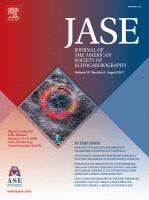Sandor, George G. S.
Person Preferred Name
George G. S. Sandor
Related Works
Content type
Digital Document
Abstract
Background
Patients with anorexia nervosa (AN) have altered physiologic responses to exercise. The aim of this study was to investigate exercise capacity and ventricular function during exercise in adolescent patients with AN.
Methods
Sixty-six adolescent female patients with AN and 21 adolescent female control subjects who exercised to volitional fatigue on a semisupine ergometer, using an incremental step protocol of 20 W every 3 min, were retrospectively studied. Heart rate, blood pressure, and echocardiographic Doppler indices were measured at rest and during each stage of exercise. Fractional shortening, rate-corrected mean velocity of circumferential fiber shortening, stress at peak systole, cardiac output, and cardiac index were calculated. Minute ventilation, oxygen consumption, carbon dioxide production, and respiratory exchange ratio were measured using open-circuit spirometry.
Results
Patients with AN had significantly lower body mass index (16.7 vs 19.7 kg/m2, P < .001), total work (1,126 vs 1,914 J/kg, P < .001), and test duration (13.8 vs 20.8 min, P < .001) compared with control subjects. Peak minute ventilation, oxygen consumption, and carbon dioxide production were significantly decreased in patients with AN. Heart rate, systolic blood pressure, cardiac index, fractional shortening, and rate-corrected mean velocity of circumferential fiber shortening demonstrated similar patterns of increase with progressive exercise between groups but were decreased at peak exercise in patients with AN. Body mass index percentile, age, peak oxygen consumption, and peak cardiac output were independently associated with exercise duration.
Conclusions
Adolescent patients with AN have reduced exercise capacity and peak cardiovascular indices compared with control subjects but normal patterns of cardiovascular response during progressive exercise. Systolic ventricular function is maintained during exercise in adolescents with AN.
Origin Information
Content type
Digital Document
Abstract
Background
Stress echocardiography has been advocated for the detection of abnormal myocardial function and unmasking diminished myocardial reserve in pediatric patients. The aim of this study was to create a simplified index of myocardial reserve, derived from the myocardial inotropic response to peak semisupine exercise in healthy children, and illustrate its applicability in a sample of pediatric oncology patients.
Methods
In this prospective analysis, children (7–18 years of age) with normal cardiac structure and function performed semisupine stress echocardiography to volitional fatigue. The quotient of wall stress at peak systole and heart rate–corrected velocity of circumferential fiber shortening were calculated at baseline and at peak exercise, the difference of which was termed the index of myocardial reserve (IMR). The IMR was also calculated in a retrospective sample of pediatric oncology patients with normal resting left ventricular function who had received anthracycline treatment and had performed the same exercise protocol to illustrate utility.
Results
Fifty healthy subjects (mean age, 13.2 ± 2.6 years) and 33 oncology patients (mean age, 12.7 ± 4.0 years) were assessed. In the healthy children at peak exercise, heart rate–corrected velocity of circumferential fiber shortening significantly increased (from 1.17 ± 0.17 to 1.58 ± 0.24 circ · sec−1, P < .001), while the quotient of wall stress at peak systole significantly decreased (from 75.3 ± 17.1 to 55.3 ± 13.8 g · cm−2, P < .001), shifting the plot of the relationship between the two parameters upward and to the left. The mean IMR was −30.8 ± 17.8, and the normal distribution ranged from −4.7 (fifth percentile) to −67.3 (95th percentile). The IMR was abnormal in 10 oncology patients who were treated with anthracyclines.
Conclusions
The authors have developed a novel IMR. Relative to the normal distribution of this IMR in healthy subjects, it is possible to identify patients with abnormal myocardial reserve. Thus, this study demonstrates the application of the IMR to aid in clinical decision making in individual patients.
Origin Information


